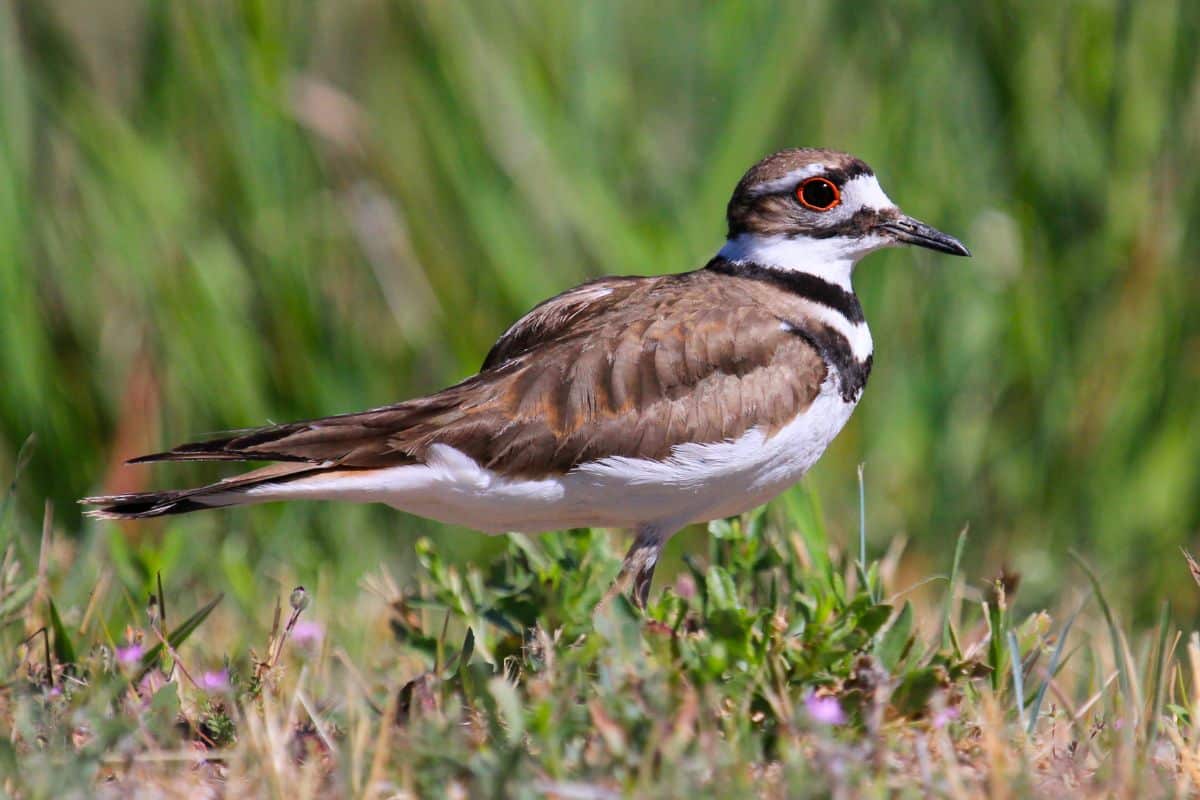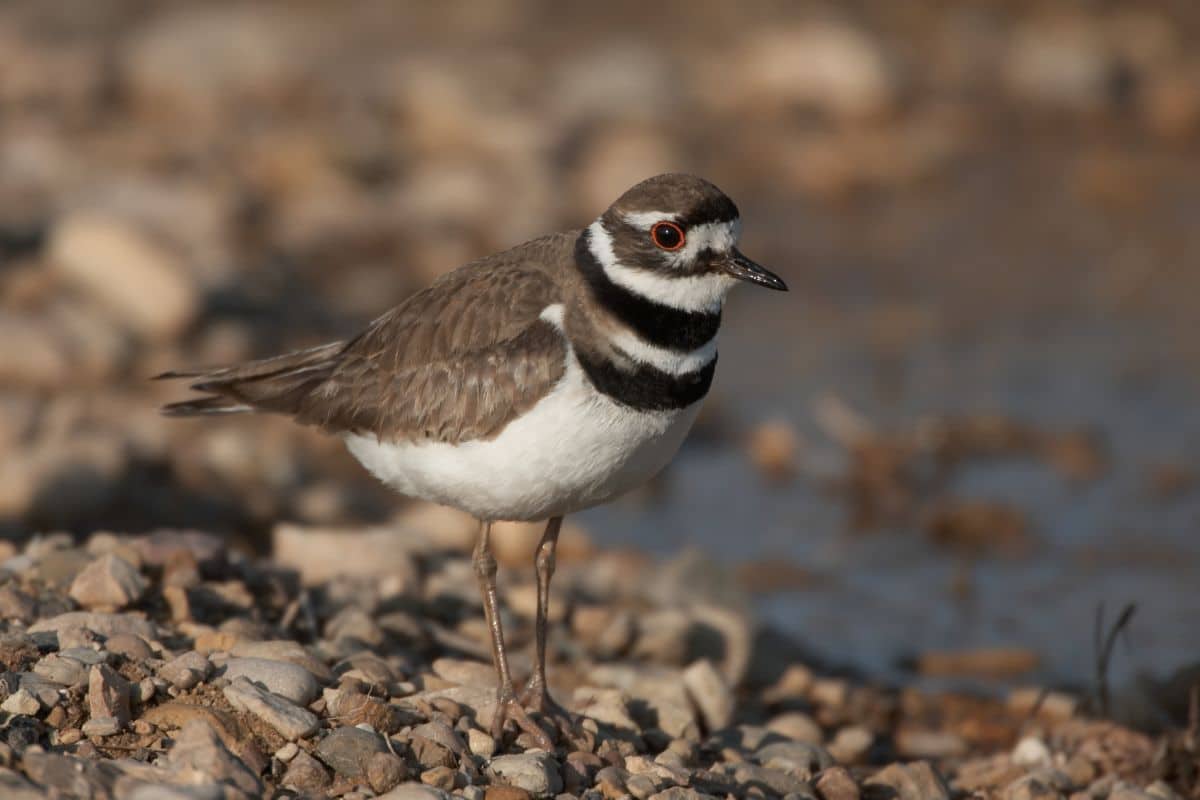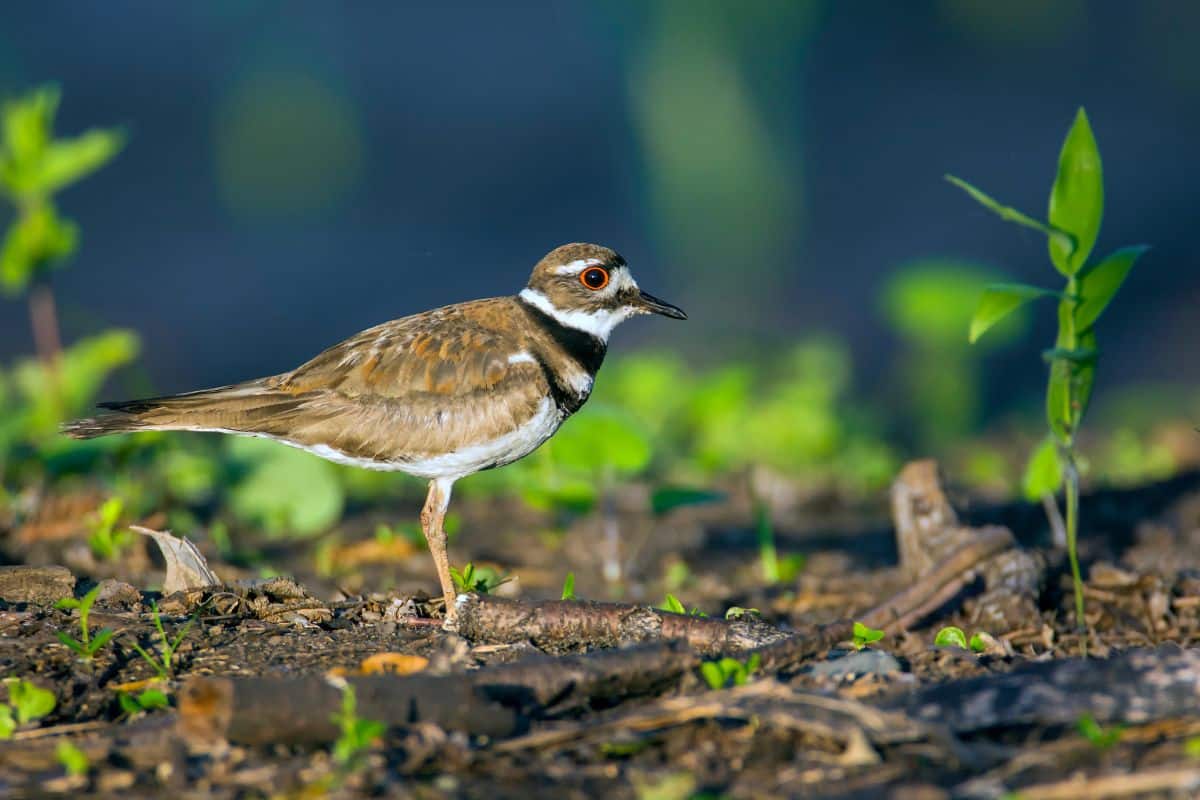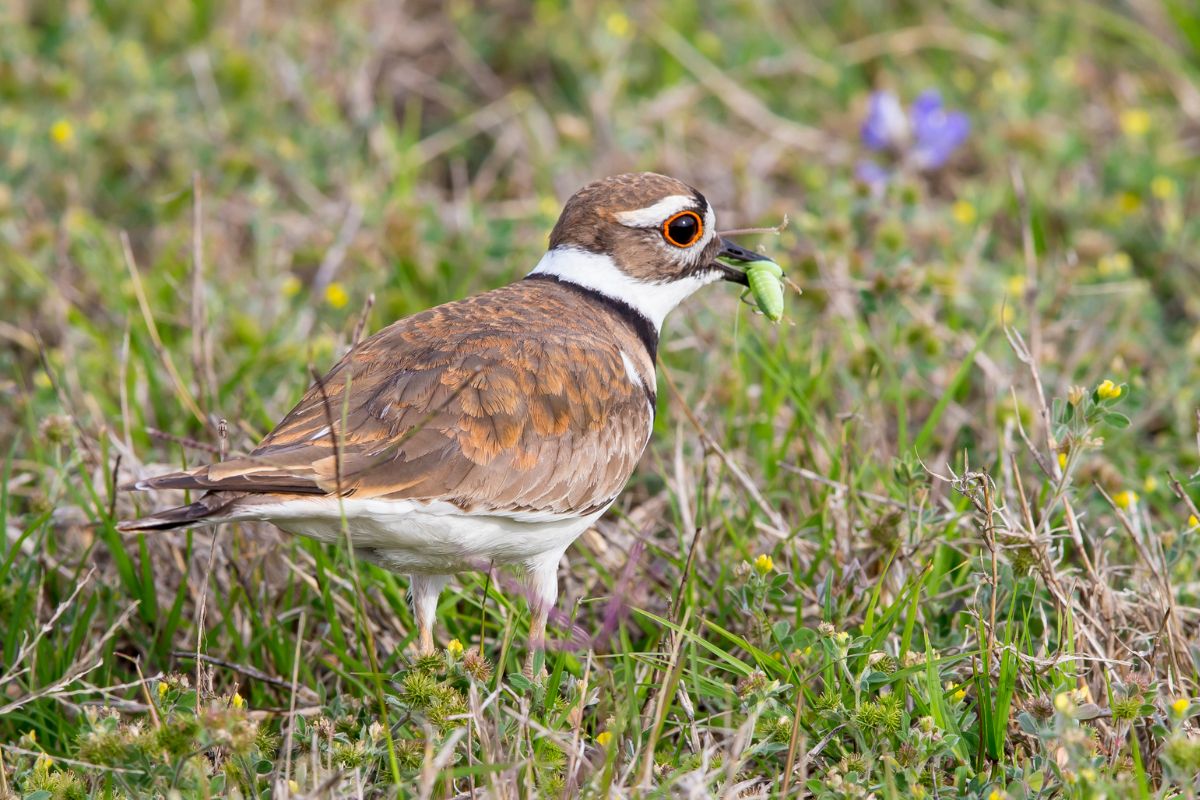Anyone who lives near the shore will likely have seen the killdeer (Charadrius vociferus). A member of the plover family, killdeer are foragers with a varied diet. They enjoy living and hunting in open expanses like farm fields, beaches, or marshlands.

Birdwatching is a favorite pastime for hobbyists and homeowners, and killdeer are lovely to watch. If you enjoy observing backyard wildlife, you might’ve wondered what you could have on hand to attract killdeer to your yard.
Put simply, a killdeer’s diet is quite rich. Killdeer enjoy insects, crustaceans, small invertebrates, and occasional seeds or berries. Read on to learn all you need to know about these lovely birds and their favorite foods.
Contents
What Do Killdeer Eat?
Killdeer are opportunistic feeders, which means they can adapt their diet to fit their environment. They’ll forage for and eat whatever insects or invertebrates are in the surrounding area. If bugs are scarce, they’ll find other options.
Insects and Small Animals
The bulk of the killdeer’s diet consists of insects and invertebrates. Insects make up the largest portion of a killdeer’s diet. They enjoy beetles, larvae, spiders, crickets, and centipedes the most, which are abundant all over.
As shorebirds, you’ll also often catch killdeer snacking on snails, minnows, and crayfish they snag from marshes or ponds. Killdeer have even been known to eat tree frogs if their standard diet of insects isn’t satisfied.
Plant Life
Killdeer mainly survive on insects and small aquatic life. However, since they’re not terribly picky, they’ll eat seeds, too. Seeds only make up a small portion of their diet and don’t provide the total nutrition a killdeer needs. They much prefer pecking through the dirt for insects.
One thing you won’t find killdeer eating is vegetation. Like many other birds, leaves, grass, and other vegetation won’t appeal to killdeer.
Where Do Killdeer Look for Food?

Since killdeer prefer small living creatures, their hunting grounds can vary. For example, marshlands provide killdeer with crayfish, snails, and small minnows, while farm fields and pastures will give access to worms, grubs, spiders, and crickets.
In areas with more human activity, you’ll also find killdeer foraging for insects in parking lots or yards. Parking lot foraging is more typical in heavily populated shore regions, though. They’ll stick to the beach, marshes, or fields in quieter areas.
When Do Killdeer Forage or Hunt?
Killdeer rely on light to see their prey, so you’ll often find them pecking the ground in fields, shorelines, and marshlands during the day. Still, to avoid predation by hawks and other daytime predators, killdeer will often forage at night.
Foraging at night also provides access to an ample food supply since many insects appear en masse after sunset. Centipedes, crickets, and other nocturnal insects make up the central part of a killdeer’s diet and are much easier to catch at night.
How Do Killdeer Forage?
Since killdeer are opportunistic eaters, they have a few different methods for finding food. Kildeer will dart along the ground, pecking at the dirt or mud when seeking out seeds or insects. The quick movements allow them to catch dirt-bound insects and creatures more quickly than if they had to dig or locate holes.
Foraging in the water is a bit trickier, but the killdeer has developed an interesting hunting technique. To catch aquatic prey, killdeer quiver one foot in the water, disturbing water bugs and small creatures to the surface. In addition, this method allows the birds to snag food that would otherwise be out of reach in the underwater muck.
Baby Killdeer Diet
One of the most exciting things about killdeer is that they don’t nest like other birds. Rather than building nests in trees or eaves, killdeer are ground nesters. This nesting allows chicks to fledge quickly. Once the killdeer chicks hatch, they hop out of the nest and follow their parents on foot to the local feeding grounds.
Since killdeer chicks don’t need to be fed by their parents, their diets are essentially the same as adults. They’ll forage for insects, small invertebrates, and seeds immediately. The main difference is that they’ll go for smaller prey simply due to their size.
Attracting Killdeer to Your Yard

Although killdeer typically live near waterways, they still appear in backyards. If you want to attract a few of these pretty birds to your yard, there are several options. Remember that it might be more difficult to lure them in than your typical songbird.
The Right Yard
Killdeer don’t frequent wooded areas. Instead, they’re more likely to approach a property with a large lawn or farm field nearby. In addition, they’ll want a nearby water source for hydration and added hunting grounds.
Essentially, killdeer are no-fuss birds. They don’t want to dig for food or fight with other birds for prey. If one area doesn’t have any insects or food to offer, they’ll simply move on. The best way to keep killdeer in your yard is to ensure your property has the things a killdeer looks for in a foraging space.
Try a Bird Feeder
A birdfeeder is the go-to for many bird lovers. By and large, smaller birds enjoy the mix of nuts and seeds that bird mix offers. Plus, birdseed is easy for homeowners to store and doesn’t cost much. However, only some birds are suited for bird feeders.
Killdeer are medium-sized birds, measuring approximately 10.5 inches long. That being the case, you won’t find them hanging on feeders often. Even so, they might enjoy the seed scattered on the ground underneath your feeder. If killdeer are nearby, toss a handful of seed in the grass as a snack to see if it draws them in.
Ensure Your Yard Has Insects
Killdeer prefer insects over vegetation for their meals. So, homes on land with a lot of insect activity, such as those on a farm or near the water, are more likely to entice a few killdeer. Shorter grass is preferable since it’ll be easier for the birds to reach the dirt.
If you want to feed killdeer yourself, invest in some mealworms to offer them. For the most part, killdeer will prefer foraging for their own food. To keep them returning to your yard, consider skipping pesticides and letting the worms, crickets, and other bugs thrive.
Are Killdeer Beneficial?
Killdeer can be beneficial in some ways but a bit of a nuisance in others. In areas with rich food options, the killdeer will eat ticks, flies, mosquitos, and other pests most people prefer to avoid. In this sense, they’re beneficial.
However, the situation is slightly different in marine areas or regions where food isn’t as diverse. Killdeer will go after frogs, caterpillars, and earthworms, many of which are essential to the ecosystem. When killdeer eat these creatures in large numbers, it can be problematic.
Final Thoughts

Killdeer are a common species of shorebird that thrives on insects and small aquatic animals. If you want to attract killdeer to your property, your best option is to ensure your yard has the type of food killdeer enjoy, such as worms and spiders. In most cases, though, killdeer are content along waterways and farm fields, foraging for everything they need.
